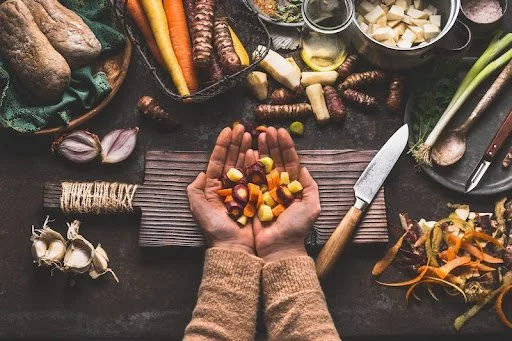Cooking and Baking Sustainably
Written by Sahana ram
The rise of home cooking and baking accompanied the COVID-19 pandemic in a fascinating way. Creating “from scratch” became the new mantra, as grocery stores were experiencing shortages in flour, yeast, and other basic ingredients. However, quarantine and isolation measures did not inhibit people’s love for food— the recipes for basic pantry items such as bread and pasta were being experimented with in every other kitchen.
During this era, the global threat of global warming also became increasingly apparent. Texas experienced its first winter storm as the loss of power and water occurred state-wide; California was singed with forest fires, forcing families to evacuate their homes and killing many who tried to escape; and Antarctica’s melting glaciers made a special appearance in a 60 Minutes episode.
Climate change is almost elusive— while it is not immediately apparent to the human eye, it is all surrounding. While the COVID-19 pandemic significantly reduced greenhouse gas emissions and air pollution within a short time period, the major themes of food and climate change brought the concept of sustainable cooking and baking to light. As our love for food continues to expand, it is important to keep in mind our environmental footprint and how we can reduce it through doing what we love most (eating).
A Few Tips
Cook with seasonal ingredients. Seasonal fruits and vegetables require less chemicals and pesticides, and ultimately reduce carbon dioxide emissions.
Avoid eating meat. This one may seem difficult, but the meat industry is responsible for a majority of global greenhouse gas emissions. It also serves as the biggest cause of deforestation globally, and a large portion of water usage is directed toward livestock maintenance.
Save a majority of nutritious bits. This can include cauliflower or broccoli stems, or my personal favorite, parmesan cheese rinds— these otherwise throw-away ingredients will take your soup or broth to the next level.
In general, attempt to use sustainable cooking and baking supplies. For example, there are reusable alternatives for parchment paper, plastic wrap, piping bags, etc.
A Recipe to Get You Going
*ingredients such as celery and carrots are typically in season during the fall - winter time
*lentils are great for the environment— they reduce carbon emissions and store carbon in the soil
My Mom’s Lentil Soup
Ingredients:
Chopped onion (1 small or ½ large)
Grated garlic (1-2 cloves)
Sliced celery (1-2 sticks) → wash thoroughly and mince the ends, all parts are edible!
Chopped carrot (1)
Chopped tomato (1)
Oil (2 tbsp)
Cumin powder (1 tsp)
Split red lentils (½ cup)
Salt, lemon juice, and cilantro to taste
Directions:
Soak the split red lentils for 30 minutes to an hour (you can chop the vegetables during this time).
Heat oil and saute onions till translucent.
Add garlic and continue to saute.
Add celery and carrot, and saute for 2 minutes on medium heat.
Add the soaked lentils, salt, and 2 cups of water. Bring to a boil.
Reduce heat to medium/low. Cover and cook until the lentils are tender/cooked (15-20 minutes).
If you prefer a creamier texture, you can blend some of the soup and add it back in.
Garnish with lemon juice and cilantro.
Note: You can use any vegetables you prefer/happen to have. You can substitute water for vegetable stock. You can also add a parmesan rind while the soup is simmering for a creamier/cheesier taste.

